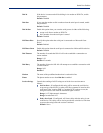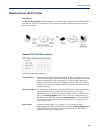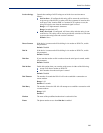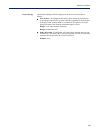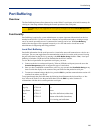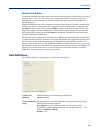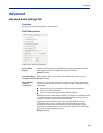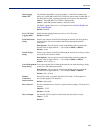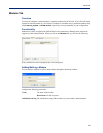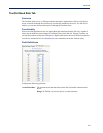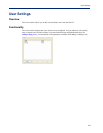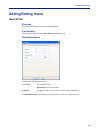
207
Port Buffering
Enable Remote
(NFS) Buffering
Enables/disables port buffering on a remote system. When you enable this
option, you have the ability to save the buffered data to a file(s) (one file is
created for each serial port) and/or send it to the Syslog host for viewing on the
Syslog host’s monitor.
Default: Disabled
NFS Host The NFS host that the IOLAN will send data to for its Remote Port Buffering
feature. The IOLAN will open a file on the NFS host for each serial port
configured for
Console Management, and will send serial port data to be
written to that file(s).
Default: None
NFS Directory The directory and/or subdirectories where the Remote Port Buffering files
will be created. For multiple IOLANs using the same NFS host, it is
recommended that each IOLAN have its own unique directory to house the
remote port log files.
Default:
/device_server/portlogs
Encrypt Data Determines if the data sent to the NFS host is sent encrypted or in the clear
across the LAN.
NOTE: When NFS encryption is enabled, the Decoder utility software is
required to be installed on the NFS host for decrypting the data to a readable
format. The Decoder utility software can be found on the installation CD-ROM
and on the
www.perle.com website.
Default: Disabled
Enable Port
Buffering to Syslog
When enabled, buffered data is sent to the syslog host to be viewed on the
host’s monitor. Choose the event level that will be associated with the "port
buffer data" in the syslog.
Data Options: Emergency, Alert, Critical, Error, Warning, Notice, Info, Debug.
Default Level: Info
Default: Disabled
Add Time Stamp to
Data
Enable/disable time stamping of the serial port buffer data.
Default: Disabled
Enable Key Stroke
Buffering
When enabled, key strokes that are sent from the network host to the serial
device on the IOLAN’s serial port are buffered.
Default: Disabled



